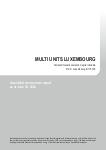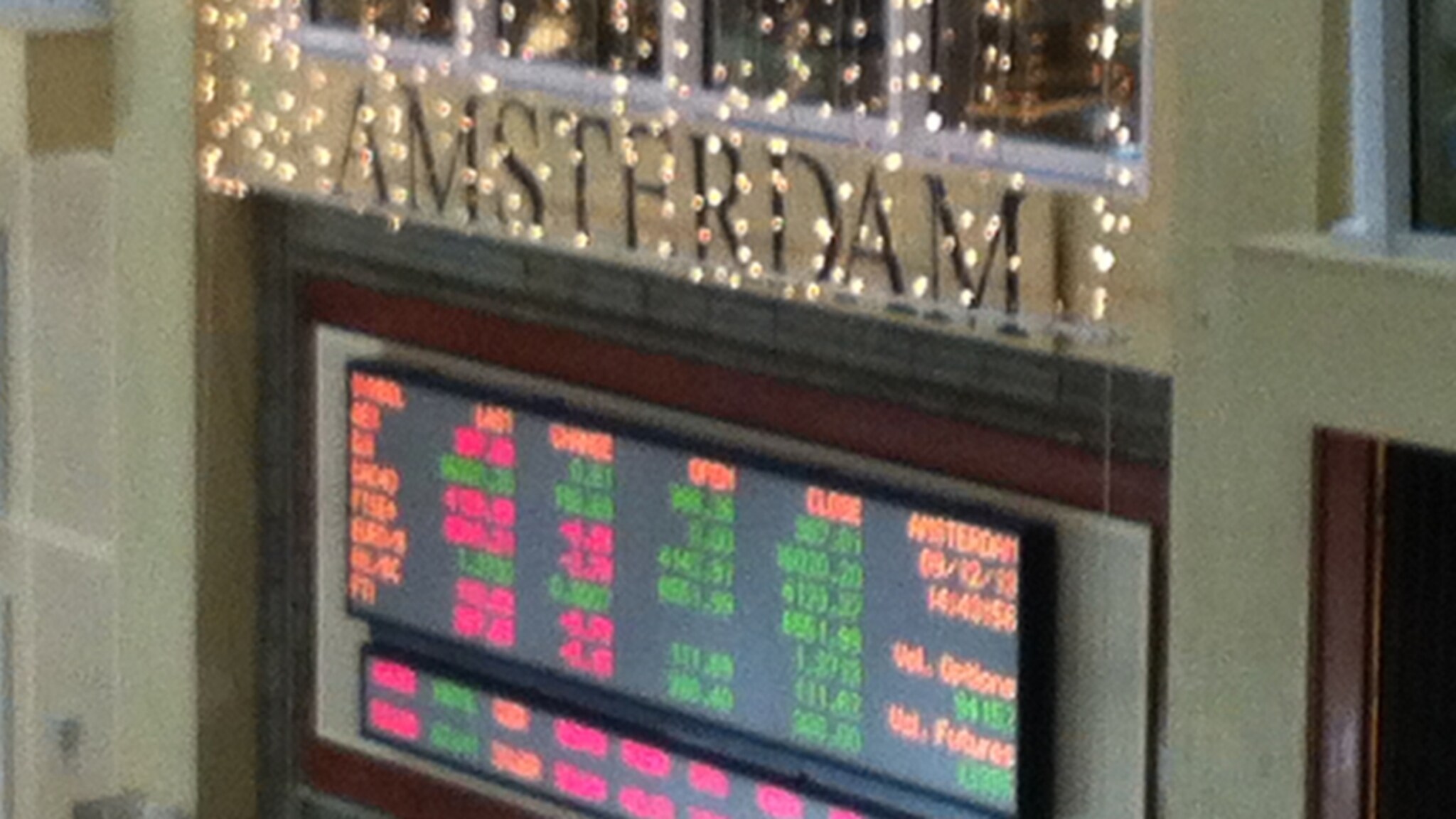Amundi Dow Jones Industrial Average UCITS ETF: How To Interpret Its Net Asset Value

Table of Contents
What is Net Asset Value (NAV) and why is it important for the Amundi Dow Jones Industrial Average UCITS ETF?
Net Asset Value (NAV) represents the market value of all the assets held within an ETF, minus any liabilities, divided by the number of outstanding shares. In simpler terms, it's the net worth of the ETF per share. For the Amundi Dow Jones Industrial Average UCITS ETF, the NAV reflects the underlying value of your investment in the 30 companies comprising the Dow Jones Industrial Average. Fluctuations in the NAV directly impact your investment's value, making it a key metric to track.
The NAV is a vital indicator of your investment's performance. Understanding its movements helps you assess the effectiveness of your investment strategy.
- NAV is calculated daily: The NAV is typically calculated at the end of each trading day, reflecting the closing prices of the underlying assets.
- NAV is a key indicator of ETF performance: Changes in the NAV show the growth or decline of your investment over time.
- Comparing NAV to the ETF's market price helps identify potential arbitrage opportunities: Sometimes, the ETF's market price might trade at a slight premium or discount to its NAV, creating potential short-term trading opportunities.
Factors influencing the NAV of the Amundi Dow Jones Industrial Average UCITS ETF.
Several factors influence the NAV of the Amundi Dow Jones Industrial Average UCITS ETF. Understanding these factors is crucial for interpreting NAV changes and making informed investment decisions.
-
Market performance of the Dow Jones Industrial Average: The primary driver of the NAV is the overall performance of the 30 companies within the Dow Jones Industrial Average. If the index rises, the NAV typically rises, and vice versa. Each company's stock price contributes proportionally to the overall index movement and, consequently, to the ETF's NAV.
-
Currency fluctuations: Since the ETF invests in US companies, currency fluctuations between the US dollar and the investor's base currency can impact the NAV. If the US dollar strengthens against the investor's currency, the NAV expressed in the investor's currency will increase, and vice versa.
-
Dividend distributions: When the underlying companies in the Dow Jones Industrial Average pay dividends, the ETF receives these dividends, which are then typically distributed to the ETF's shareholders. These distributions reduce the NAV slightly, reflecting the payout.
-
Expense ratio: The ETF charges an expense ratio to cover its operational costs. This expense ratio slightly reduces the NAV over time.
-
Other influencing factors:
- Economic indicators influencing the Dow Jones: Macroeconomic factors like interest rate changes, inflation, and GDP growth can significantly influence the Dow Jones and, therefore, the ETF's NAV.
- Geopolitical events affecting constituent company performance: Global events such as trade wars or political instability can impact individual companies within the index, influencing the overall NAV.
- Sector-specific news impacting the Dow Jones: Positive or negative news affecting specific sectors represented in the Dow Jones (e.g., technology, finance) can directly impact the ETF's NAV.
Where to find the NAV of the Amundi Dow Jones Industrial Average UCITS ETF.
Locating the NAV of the Amundi Dow Jones Industrial Average UCITS ETF is straightforward. Several reliable sources provide this crucial information:
-
Official ETF provider website: Amundi's official website is the most reliable source for the NAV, usually updated daily.
-
Financial news websites: Reputable financial news websites and data providers (like Yahoo Finance, Google Finance) offer real-time and historical NAV data for various ETFs, including the Amundi Dow Jones Industrial Average UCITS ETF.
-
Brokerage platforms: If you hold the ETF in your brokerage account, the NAV will be displayed alongside the market price of the ETF.
-
Accessing NAV data:
- Amundi's website: Usually found under the ETF's factsheet or pricing section.
- Financial news websites: Search for the ETF's ticker symbol.
- Brokerage platforms: Check your portfolio holdings or the ETF's detailed information page.
- Time of calculation and potential delays: The NAV is typically calculated at the close of the market, but there might be slight delays in updating information across different platforms.
- Discrepancies between sources: Minor discrepancies might occur due to reporting time differences. Always prioritize the official provider's data.
Interpreting the NAV and making investment decisions.
Understanding the NAV's implications is key to making sound investment decisions.
-
Comparing NAV to the market price: The ETF's market price might trade at a premium (higher than the NAV) or a discount (lower than the NAV). This difference can present trading opportunities for sophisticated investors.
-
Using NAV for performance tracking: Tracking the historical NAV allows you to assess the ETF's past performance and compare it to your investment goals.
-
Understanding the implications of NAV changes for your investment strategy: Significant changes in the NAV should prompt a review of your investment strategy, especially in light of market conditions and your risk tolerance.
-
Investment Strategies:
- Risk assessment based on NAV fluctuations: Regular monitoring of NAV changes allows for a better understanding of the investment's risk profile.
- Strategies for capitalizing on NAV discrepancies: While risky, exploiting short-term discrepancies between market price and NAV can lead to profit opportunities for experienced traders.
- Long-term versus short-term investment considerations: The NAV is a crucial factor whether you're aiming for long-term growth or short-term trading gains.
Conclusion:
Understanding the Net Asset Value (NAV) of the Amundi Dow Jones Industrial Average UCITS ETF is essential for any investor seeking exposure to the Dow Jones Industrial Average. By considering the factors influencing the NAV and utilizing readily available resources, you can make more informed investment decisions. Regularly monitor the NAV and stay informed about market conditions to make the most of your investment in this leading ETF. Learn more about the Amundi Dow Jones Industrial Average UCITS ETF and how to effectively interpret its Net Asset Value (NAV) to optimize your investment strategy.

Featured Posts
-
 How To Interpret The Net Asset Value Nav Of Amundi Msci World Ii Ucits Etf Usd Hedged Dist
May 25, 2025
How To Interpret The Net Asset Value Nav Of Amundi Msci World Ii Ucits Etf Usd Hedged Dist
May 25, 2025 -
 Is News Corps Stock Price Underestimating Its True Worth
May 25, 2025
Is News Corps Stock Price Underestimating Its True Worth
May 25, 2025 -
 Aex Stijgt Na Uitstel Trump Analyse Van De Winnende Fondsen
May 25, 2025
Aex Stijgt Na Uitstel Trump Analyse Van De Winnende Fondsen
May 25, 2025 -
 10 Fastest Standard Production Ferraris A Track Performance Comparison
May 25, 2025
10 Fastest Standard Production Ferraris A Track Performance Comparison
May 25, 2025 -
 Manny Garcias Lego Masterclass At Veterans Memorial Elementary School A Photo Recap
May 25, 2025
Manny Garcias Lego Masterclass At Veterans Memorial Elementary School A Photo Recap
May 25, 2025
Latest Posts
-
 A Deep Dive Into Demnas Gucci Collections
May 25, 2025
A Deep Dive Into Demnas Gucci Collections
May 25, 2025 -
 Demna Reshaping Guccis Brand Identity
May 25, 2025
Demna Reshaping Guccis Brand Identity
May 25, 2025 -
 The Future Of Gucci Under Demnas Leadership
May 25, 2025
The Future Of Gucci Under Demnas Leadership
May 25, 2025 -
 Analyzing Demnas Design Direction At Gucci
May 25, 2025
Analyzing Demnas Design Direction At Gucci
May 25, 2025 -
 Demna Gvasalias Gucci Debut What To Expect
May 25, 2025
Demna Gvasalias Gucci Debut What To Expect
May 25, 2025
